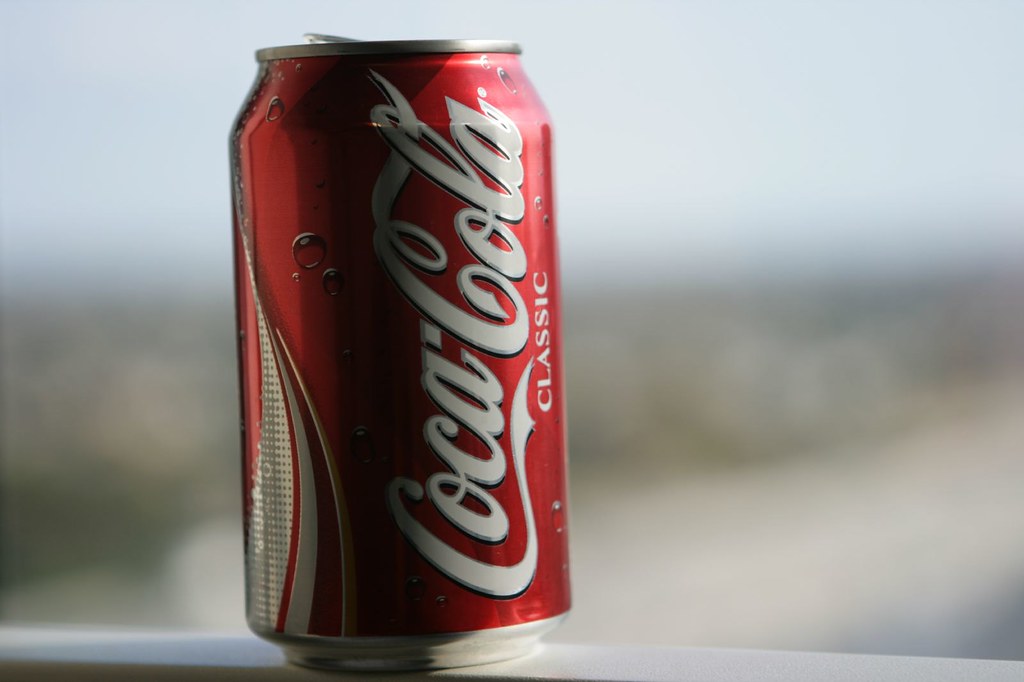One of the most well-known soft beverages in the world, Coca-Cola is consumed by millions of people every day. Do you know what temperature Coca-Cola freezes at, though? Maybe you’ve over-frozen a can of Coke and discovered it to be absolutely solid, or maybe you’re just interested in the science underlying this occurrence.
Like any other liquid, Coca-Cola’s freezing point is influenced by its chemical make-up. Coca-Cola typically freezes at 32°F (0°C), which is the same temperature at which water does. The amount of sugar and other additives in Coca-Cola as well as the components can all affect the beverage’s freezing point.
Coca-Cola can occasionally even stay liquid at temperatures below the freezing point. This is because the liquid’s freezing point can be lowered by components like dissolved sugars and other chemicals. Coca-Cola will eventually turn to a solid if exposed to temperatures that are far below freezing.
It’s important to keep in mind that different Coca-Cola brands, such Diet Coke and Coke Zero, could react differently to frigid conditions. Instead of sugar, these beverages use artificial sweeteners, which may alter the liquid’s freezing point and other physical characteristics.
In conclusion, even though Coca-Cola typically freezes at 32°F (0°C), the actual freezing point might change based on the drink’s chemical makeup. Therefore, the next time you store a can of Coke in the freezer, be aware that depending on the temperature and the beverage’s contents, it may freeze solid or continue to be a liquid.

Why does Coca-Cola sometimes turn into slush when frozen instead of solid ice?
Due to its special makeup, Coca-Cola may freeze into a slush-like consistency rather than solid ice. The beverage’s dissolved carbon dioxide gas is the primary cause of this occurrence. Coca-Cola can or bottle can develop tiny bubbles or pockets of carbon dioxide gas when exposed to subfreezing temperatures.
By creating nucleation sites where ice crystals can start to form, these pockets of gas hasten the freezing process. In place of a solid block of ice, when more ice crystals gather around the gas pockets, the result can resemble slush. By reducing the liquid’s freezing point and enabling it to stay partially frozen, the sugar and other dissolved substances in the beverage can also help achieve this effect.
The rate at which Coca-Cola is chilled can also have an impact on the development of slush. The liquid may not have enough time to fully crystallise into solid ice if it is cooled too quickly, leading to a mushy texture. A more homogeneous solid block of ice may result from slower cooling, on the other hand.

What is the effect of altitude on the freezing point of Coca-Cola?
Coca-Cola’s freezing point can be slightly affected by altitude, however the change is typically not very noticeable. Coca-Cola’s freezing point is dependent on both the concentration of dissolved particles in the liquid and the air pressure. Lower air pressure at higher elevations can somewhat lower a liquid’s boiling point and freezing point.
Practically speaking, this means that Coca-Cola may freeze a little bit more quickly or slowly at high elevations than it would at sea level. For instance, the atmospheric pressure is approximately 83% of sea level pressure at an altitude of 5,000 feet (1,524 metres). Coca-Cola’s freezing point may be lowered by roughly 0.2°C (0.4°F) as a result, suggesting that it might freeze a little bit quicker than at sea level.
However, the altitude-related difference in freezing point is often insignificant and unlikely to have a discernible effect on Coca-Cola’s freezing or slushy consistency. The freezing point and texture of the beverage are far more influenced by other variables, such as freezer temperature and drink content.
How long does it take for a can of Coca-Cola to freeze in a standard household freezer?
A variety of elements, such as the freezer’s temperature, the can’s size, and the drink’s composition, can affect how long it takes for a can of Coca-Cola to freeze in a typical family freezer. The typical operating range of a domestic freezer is between 0°F and -10°F (-18°C and -23°C), which is significantly below Coca-Cola’s freezing point.
A 12-ounce Coca-Cola can may take between 1.5 and 3 hours to totally freeze, presuming it is kept in the freezer’s coldest area. It could take longer to freeze if the can is larger or the freezer is somewhat warmer.

Can freezing Coca-Cola cause the can or bottle to burst?
Coca-Cola can or bottle burst if it is frozen. Coca-Cola’s liquid can expand as it starts to freeze when exposed to freezing conditions in a can or bottle. As a result of this pressure buildup inside the container, the can or bottle may rupture or break open.
The longer the container is exposed to below-freezing temperatures, the greater the danger that it will explode. A can of Coca-Cola, for instance, may have enough time to totally freeze if left in a freezer overnight, leading to the can’s rupture.
Due to the strength and flexibility differences between the two materials, plastic bottles may be more likely to explode than aluminium cans. Additionally, the pressure caused by the dissolved carbon dioxide gas in carbonated beverages like Coca-Cola may make them more likely to rupture than non-carbonated liquids.
It is advised to keep Coca-Cola and other carbonated drinks above freezing, ideally between 35°F and 40°F (1.7°C to 4.4°C), to reduce the chance of the container bursting. Coca-Cola containers should be allowed to slowly defrost in a cool location after being exposed to freezing temperatures to reduce the chance of bursting.
Relevant Articles
Can You Freeze Zucchini Boats?
Can You Freeze Insomnia Cookies?

Comments are closed